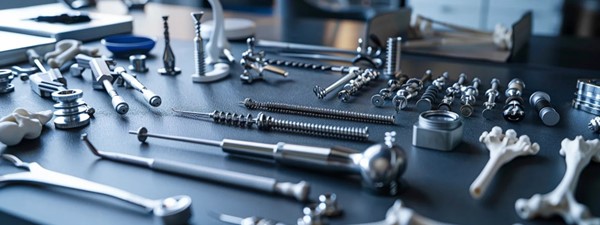
Types of Dental Implants
Dental implants are designed to cater to various dental needs, classified into main categories: Endosteal for those with healthy jawbones, Subperiosteal for low bone density, and alternative options like Zygomatic and Mini implants. Immediate Load Dental Implants, known as ‘Teeth in a Day,’ require good bone density and healthy gums. Mini implants are less invasive, ideal for stabilizing lower dentures. Implant-supported dentures offer improved stability and comfort, preserving bone. These implants provide a stable foundation for replacement teeth, enhancing both function and aesthetics. Materials range from titanium for durability to zirconia for aesthetics. Bone augmentation techniques like grafting guarantee implant success. Choosing the right implant involves considering oral health, bone density, and aesthetic needs, ensuring a lasting solution. Further exploration unfolds the importance of careful selection tailored to individual needs.
Key Takeaways
- Endosteal implants are the most common type, suitable for those with a healthy jawbone.
- Subperiosteal implants are an option for individuals with insufficient jawbone density.
- Zygomatic implants provide an alternative for severe bone loss, primarily in the upper jaw.
- Mini dental implants are less invasive, ideal for stabilizing lower dentures.
- Implant-supported dentures offer improved stability and comfort, preserving bone and providing a long-term solution.
The Basics of Dental Implants
Dental implants are a revolutionary solution for replacing missing teeth, designed to last a lifetime and closely mimic the appearance and function of natural teeth. Unlike traditional dentures, dental implants provide a permanent and stable foundation for artificial teeth, ensuring a natural look and feel. They are a safe and effective treatment option, suitable for replacing one or more missing teeth, and can significantly enhance both oral health and overall quality of life. Your dental professional will assess your specific needs to determine if you are a candidate for dental implants, ensuring a personalized approach to restoring your smile.
The Basics of Dental Implants
Before exploring the various types of dental implants, it is essential to grasp the fundamentals of these dental devices. This includes understanding their significance in implant dentistry.
What patients can anticipate during the implant procedure, and how to prepare for surgery.
Understanding Dental Implants
Dental implants serve as a foundational solution for replacing missing or damaged teeth, offering a durable and natural-looking alternative to traditional dentures or bridges. The types of dental implants mainly include endosteal implants, subperiosteal implants, and mini dental implants, each tailored to meet different needs.
Endosteal implants, which are surgically placed directly into the jawbone, represent the most common form. Subperiosteal implants sit atop the jawbone under the gum but above the bone, suitable for patients with insufficient bone height. Mini dental implants, smaller in diameter, serve as a less invasive option.
Dental implant placement involves several steps, starting with the removal of the damaged tooth, followed by the precise placement of the implant into the jawbone. After the implant is placed, a healing period is necessary to allow the bone to integrate with the implant. Finally, an artificial tooth is attached to the implant. Follow-up visits are crucial to monitor healing and ensure the success of the procedure. This process allows for the seamless replacement of teeth, revitalizing both oral health and aesthetics.
The Importance of Implant Dentistry
Understanding the significance of implant dentistry is fundamental in appreciating how dental implants have transformed the approach to replacing missing or damaged teeth.
- Implant Dentistry Variety: Encompasses both traditional dental implants and immediate load dental implants, meeting diverse patient needs.
- Advanced Procedures: Dental implant procedures often involve bone augmentation or sinus augmentation, utilizing bone graft material and growth factors to guarantee success.
- Types of Dental Implants: Primarily endosteal and subperiosteal implants, each tailored for specific bone conditions and patient situations.
- Technological Innovations: Implant dentistry continually evolves, integrating advanced materials and techniques to enhance outcomes and patient experiences.
This thorough approach ensures that implant dentistry remains at the forefront of dental restoration, providing durable and aesthetically pleasing solutions for tooth loss.
What to Expect During a Dental Implant Procedure
Initiating the process of acquiring a dental implant involves a series of steps, each vital to ensuring the long-term success of the procedure. The journey begins with an initial consultation to evaluate your oral health and determine if you have sufficient jawbone to support the implant.
If there’s inadequate bone, a bone augmentation procedure or bone grafting might be necessary to guarantee a strong foundation for the implant. The type of implant and the suitability of less invasive techniques will also be discussed.
During the implant placement, local anesthesia is administered for comfort. This phase is pivotal in promoting dental health by replacing missing teeth and restoring functionality. The final step involves placing an artificial tooth on the implant, completing the restoration process. Making sure you have a thorough understanding of these aspects can greatly contribute to the optimization of your oral health.
Preparing for Dental Implant Surgery
Preparing for dental implant surgery involves several crucial steps to ensure a successful outcome. Initially, your dental professional will conduct a thorough evaluation of your teeth, gums, and jawbone health. This assessment often includes diagnostic dental X-rays and other imaging techniques to confirm your suitability for dental implants. During this phase, your dental professional will also discuss anesthesia options to ensure your comfort during the procedure. Following your dental professional’s pre-surgery instructions meticulously is vital for a smooth and successful dental implant procedure, setting the stage for optimal healing and implant integration.
Initial Consultation
The journey to acquiring dental implants begins with an initial consultation with your dental professional. During this visit, a comprehensive evaluation of your oral health will be conducted, focusing on the condition of your teeth, gums, and jawbone. Your dental professional will discuss various treatment options, addressing any questions or concerns you may have. Diagnostic tools such as dental X-rays and other imaging methods will be utilized to determine if you are a suitable candidate for dental implants. This initial consultation is a critical step in planning a personalized treatment strategy tailored to your specific needs.
Preparing for Dental Implant Surgery
After exploring what to expect during the dental implant procedure, the next step is to focus on how patients should prepare for dental implant surgery, emphasizing the importance of readiness for a successful outcome. Preparation involves understanding the role of bone and gum health in the process:
- Assessment of Bone Density and Volume: Confirm sufficient bone is available to support the implant. If bone loss has occurred, treatments such as bone grafts or bone additives may be needed to promote healthy bone growth.
- Evaluation for Sinus Lift: In cases of significant bone loss in the upper jaw, a sinus lift may be required to create space for natural bone growth.
- Treatment of Periodontal Disease: Healthy gum tissue is essential. Any signs of periodontal disease must be addressed before proceeding.
- Healthy Lifestyle Choices: Smoking cessation and good oral hygiene practices can improve outcomes by promoting faster healing and reducing the risk of complications.
Main Categories of Dental Implants
Moving forward in our exploration of dental implants, we now examine the two main categories that cater to different patient needs: endosteal and subperiosteal implants.
Endosteal implants are the most widely used type, suitable for patients with a healthy jawbone to anchor the implant. On the other hand, a subperiosteal implant presents a viable option for patients who may not have sufficient bone density. These implants are surgically placed under the gums but rest on or above the jawbone, making them an alternative when bone augmentation is not preferred.
Endosteal Implants: The Most Common Type
Endosteal implants represent the most frequently chosen type within the field of dental implantology, offering a variety of benefits and considerations. An endosteal implant is a common type of dental implant that is surgically inserted into the jawbone, providing stability and proper integration. This segment will explore the distinct advantages and disadvantages of endosteal implants, providing a well-rounded perspective on their use.
Additionally, the procedure for installing endosteal implants will be outlined, ensuring a thorough understanding of the process from initial consultation to final placement.
Advantages and Disadvantages of Endosteal Implants
Among the main categories of dental implants, endosteal implants stand out as the most commonly utilized type, offering both advantages and disadvantages to take into account.
Advantages
- Acts as a permanent replacement for missing teeth.
- Provides an artificial root to support a dental crown.
- Suitable for replacing a single tooth or multiple missing teeth.
- Utilizes the natural jawbone, ensuring stability.
Disadvantages
- Requires enough bone density for implantation.
- Not suitable for patients lacking natural jawbone without prior bone augmentation.
- More invasive than alternative treatment options.
- Limited by the quality and quantity of the patient’s natural bone.
The Dental Implant Procedure for Endosteal Implants
The procedure for placing endosteal dental implants involves several critical steps:
- A thorough evaluation of the patient’s jawbone to confirm its suitability for the implant.
- Tooth extraction, if needed, preceding the implantation.
- Endosteal implants are ideal for replacing missing teeth and can support a single tooth, multiple teeth, or a permanent bridge.
- The implants are placed directly into the upper or lower jaw, with options for same-day implants available.
Subperiosteal Implants: When Bone Density is a Concern
Subperiosteal implants offer a viable solution for patients whose bone density is insufficient to support traditional endosteal implants. These types of dental implants are designed for individuals who cannot undergo bone augmentation procedures. Subperiosteal implants rest on top of the bone but under the gum, making them ideal for areas with significant bone loss, such as the lower jaw or upper back jaw.
- Bone Density Requirements: Subperiosteal implants are beneficial when the patient’s bone density is too low for endosteal implants.
- Location Specifics: Particularly useful in the lower jaw and upper back jaw where bone loss is prevalent.
- Prosthetic Teeth Support: They serve as a stable base for prosthetic teeth without penetrating the bone deeply.
- Alternatives: Zygomatic implants and mini implants offer other options, with zygomatic implants anchoring into the zygomatic bone when traditional sites are unsuitable.
Zygoma Implants: An Alternative for Severe Bone Loss
Zygoma implants offer a groundbreaking solution for patients experiencing severe bone loss in the upper jaw, where traditional dental implants may not be feasible. These specialized implants are significantly longer than conventional ones and are anchored directly into the cheekbone (zygoma), providing a stable foundation for dental restorations. Zygoma implants are particularly beneficial for patients who cannot undergo bone augmentation procedures. They offer a permanent solution for missing teeth in the upper jaw and can also be used to stabilize dentures, ensuring both functionality and aesthetics are restored.
All-on-4 Dental Implants: Full Arch Restoration
All-on-4 dental implants provide a comprehensive solution for patients needing a full arch restoration. This innovative system involves placing four strategically positioned implants in the jawbone, which act as anchors for a permanent bridge. All-on-4 implants offer a durable and stable alternative to traditional dentures, eliminating the need for adhesives and daily maintenance. This method is ideal for patients missing multiple teeth or those with compromised jawbone structure, as it can often bypass the need for extensive bone grafting. All-on-4 implants not only restore the full functionality of your smile but also provide a complete aesthetic makeover, enhancing both confidence and quality of life.
Specialized Dental Implant Options
Beyond the main categories of dental implants, there are specialized options designed to meet unique patient needs and situations.
These include Immediate Load Dental Implants, also known as ‘Teeth in a Day,’ Mini Dental Implants for those seeking a smaller solution, and Dentures Supported by Dental Implants, which offer enhanced stability and comfort.
Each of these options brings its own set of advantages, tailored to provide solutions for specific dental challenges.
Immediate Load Dental Implants: Teeth in a Day
Immediate Load Dental Implants, commonly referred to as ‘Teeth in a Day‘, offer a swift and efficient solution for patients seeking dental restoration.
The key to accessing this innovative option lies in understanding the criteria for candidacy, which includes sufficient bone density and gum health.
This segment will explore the prerequisites and considerations necessary for patients contemplating Immediate Load Dental Implants as a viable dental solution.
Candidacy for Immediate Load Dental Implants
Determining candidacy for immediate load dental implants, also known as ‘Teeth in a Day,’ involves evaluating a patient’s oral health and bone structure to confirm they can support the immediate placement and loading of the implant.
- Adequate bone density to anchor four dental implants.
- Healthy gums free from periodontal disease.
- Absence of conditions that hinder oral healing, like uncontrolled diabetes.
- Previous use of traditional dentures or missing one or more teeth.
Mini Dental Implants: A Smaller Solution
Mini dental implants offer a compact and less invasive alternative for patients seeking to improve their dental health. Unlike their conventional counterparts, these implants are noticeably smaller, usually about the diameter of a toothpick. This size advantage not only makes the surgical procedure less intimidating for patients but also reduces recovery time.
Ideal for stabilizing lower dentures, mini dental implants are a practical solution for patients who may not have sufficient bone density for standard implants. Their minimally invasive nature also means that they can often be placed in a single visit, offering a quicker path to enhanced dental function and aesthetic.
Despite their size, mini dental implants are durable and provide a secure foundation for dental restoration, making them an increasingly popular choice among patients and dentists alike.
Dentures Supported by Dental Implants: Stability and Comfort
For individuals facing the challenges of complete tooth loss, dentures supported by dental implants offer a revolutionary blend of stability and comfort, far surpassing traditional denture options. Unlike removable dentures, implant-supported dentures offer enhanced stability and comfort. This innovative approach integrates the following key features:
- Improved Stability: Implant-supported dentures anchor directly to the jawbone, greatly reducing movement and slippage common in traditional dentures.
- Enhanced Comfort: By distributing biting forces more naturally across the jaw, these dentures alleviate the sore spots frequently caused by conventional counterparts.
- Preservation of Bone Structure: Implants stimulate bone, helping to maintain facial structure and prevent the bone loss associated with tooth loss.
- Long-term Solution: Designed to last, these dentures provide a durable solution, minimizing the need for adjustments and replacements over time.
Considerations and Additional Procedures
Choosing the right dental implant involves understanding the different materials available, as each type offers unique benefits tailored to individual patient needs.
In addition, the success of a dental implant can greatly depend on the underlying bone structure, requiring procedures such as bone augmentation for best results.
As such, a thorough evaluation is essential in selecting the appropriate dental implants, considering the specific requirements and conditions of each patient.
Different Types of Dental Implant Materials
When considering dental implants, the choice of material plays a pivotal role in the success and longevity of the procedure. Various materials are used, each with its unique properties and compatibility with the human body.
- Titanium: The most commonly used material due to its strength, durability, and biocompatibility. It integrates well with bone tissue.
- Zirconia: A ceramic material favored for its aesthetic qualities, matching the color of natural teeth and being hypoallergenic.
- Polymer: Lighter and less expensive, but not as durable as metal or ceramic options. Mainly used in temporary implants.
- Stainless Steel: Rarely used for the implant itself but often utilized in components due to its strength and resistance to corrosion.
The Role of Bone Augmentation in Implant Success
Understanding the choice of material for dental implants sets the stage for discussing another key factor in implant success: the role of bone augmentation.
Bone augmentation is a crucial procedure for patients lacking sufficient bone volume or density to support dental implants. This condition often results from bone resorption following tooth loss, injury, or periodontal disease.
Bone augmentation techniques, such as bone grafting, sinus lifts, and ridge expansion, are employed to increase bone mass and create a stable foundation for the implant. These additional procedures, while extending the overall treatment timeline and potentially increasing costs, greatly enhance the likelihood of implant success by ensuring the implant is securely anchored.
Proper assessment of bone health and the strategic use of bone augmentation can dramatically improve patient outcomes in dental implantology.
Choosing the Right Types of Dental Implants for Your Needs
Choosing the appropriate dental implant type is pivotal, considering a myriad of factors such as the patient’s oral health status, bone density, and specific aesthetic or functional needs. Here are four key considerations:
- Oral Health Status: The overall health of your gums and remaining teeth can influence the type of implant you choose.
- Bone Density: Adequate bone density is essential for implant support. Insufficient bone may necessitate a bone graft.
- Aesthetic Needs: Depending on the visibility of the implant area, certain types may be preferred for a more natural appearance.
- Functional Requirements: The choice may also depend on the location of the missing tooth and the functional load it will bear.
Selecting the right implant is a nuanced process involving these factors to ensure long-lasting and satisfactory results.
Conclusion
In essence, dental implants serve as a pivotal advancement in restorative dentistry, offering individuals the opportunity to regain functionality and aesthetics lost due to missing teeth.
With the main categories being endosteal and subperiosteal implants, and specialized options such as mini implants and All-on-4, there exists a variety of solutions tailored to meet diverse patient needs.







Reader Interactions